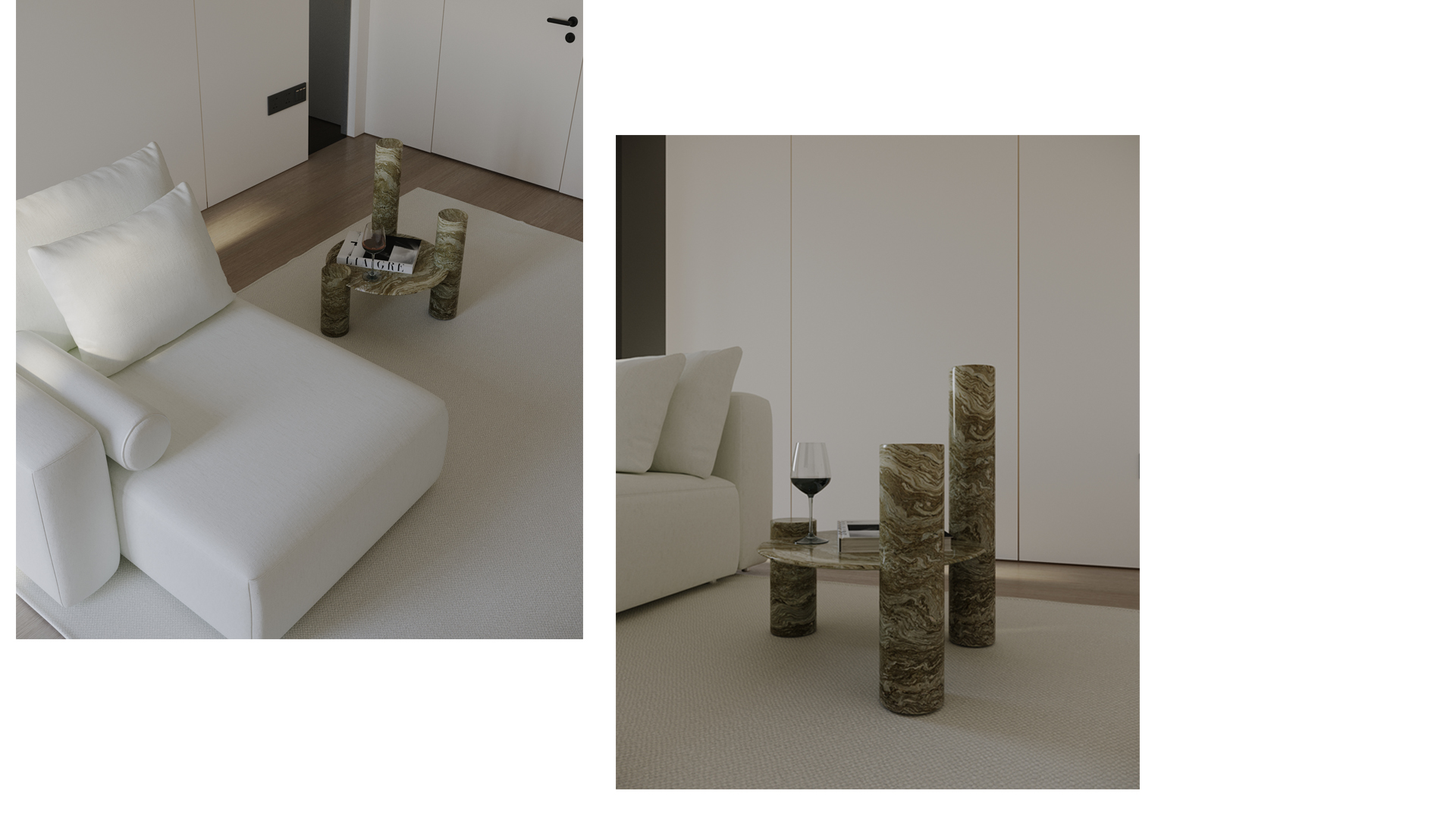Asimmètrico Coffee Table by Studio IB Milano: The Art of Disrupting Balance
17.02.25

Asimmètrico:
In an era where design often gravitates toward predictability, the Asimmètrico Coffee Table refuses to conform. It is not just furniture—it is an artistic provocation, a manifesto of asymmetry, and a radical redefinition of balance.
This piece does not merely exist within a space; it commands it, compelling the eye to move, to explore, to question. Its asymmetry isn’t random—it is a deliberate composition that plays with perception, proving that imperfection, when executed with precision, becomes a new form of harmony.
Design as a Language
Asimmètrico is more than an object; it is an experience. It represents a dialogue between material and movement, where artistry and function merge seamlessly. This is not design as we know it—it is a bold, modern sculpture disguised as a coffee table. In a world obsessed with symmetry, Asimmètrico makes asymmetry feel like the ultimate luxury.
But design is more than aesthetics. It is the silent force that shapes our experiences, emotions, and interactions with the world. At its core, design is the art of problem-solving, weaving together beauty, function, and intention into a seamless whole. By exploring its philosophical foundations and psychological impact, we gain a deeper understanding of its role in shaping perception and innovation.
The Philosophy of Design
At its most fundamental level, design is an expression of intent. It is not merely about creating something visually pleasing but about imbuing objects and spaces with meaning and purpose. Design thinking—an iterative process of understanding, ideation, and refinement—stems from a deep philosophical tradition that values both rationality and intuition.
The ancient Greeks emphasized harmony and proportion, leading to enduring principles of balance and symmetry that still guide design today. Modernist movements, such as Bauhaus, championed the idea that form follows function, advocating for usability and clarity over ornamentation. In contrast, contemporary design movements embrace fluidity, sustainability, and emotional resonance, recognizing that effective design must evolve alongside cultural and technological shifts.
The Psychology of Design
The way we perceive design is deeply rooted in psychology. Human-centered design considers cognitive biases, emotional triggers, and sensory experiences to create solutions that resonate on a profound level. Color theory, spatial arrangement, and materiality all play critical roles in shaping perception.
For example, warm colors evoke energy and passion, while cooler hues create a sense of calm and sophistication. The psychology of space dictates that open, airy environments foster creativity, whereas enclosed, intimate settings enhance focus and comfort. Material choices—whether the warmth of wood, the luxury of marble, or the industrial strength of steel—affect how we engage with our surroundings on both a tactile and emotional level.
The Intersection of Function and Beauty
Design thrives at the intersection of functionality and beauty. A well-designed object or space should not only fulfill its purpose but also inspire and elevate the human experience. The best designs—whether in architecture, furniture, fashion, or technology—are those that feel effortless and intuitive.
Take, for example, luxury interior design. The placement of each element, from lighting to furniture, is a carefully orchestrated composition that enhances both the visual appeal and practicality of a space. The use of natural materials, such as marble, introduces timeless elegance and durability, demonstrating how beauty and utility can coexist harmoniously.
Design as a Living Entity
Ultimately, design is a living entity, constantly evolving with the needs and aspirations of society. The Asimmètrico Coffee Table is a testament to this evolution—a bold reimagining of what furniture can be. It challenges conventional notions of balance, proving that asymmetry, when mastered, can redefine luxury and sophistication.
In the ever-changing landscape of design, Asimmètrico stands as a symbol of innovation, an invitation to embrace imperfection, and a reminder that the most compelling designs are those that dare to break the mold.
